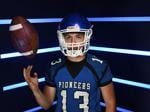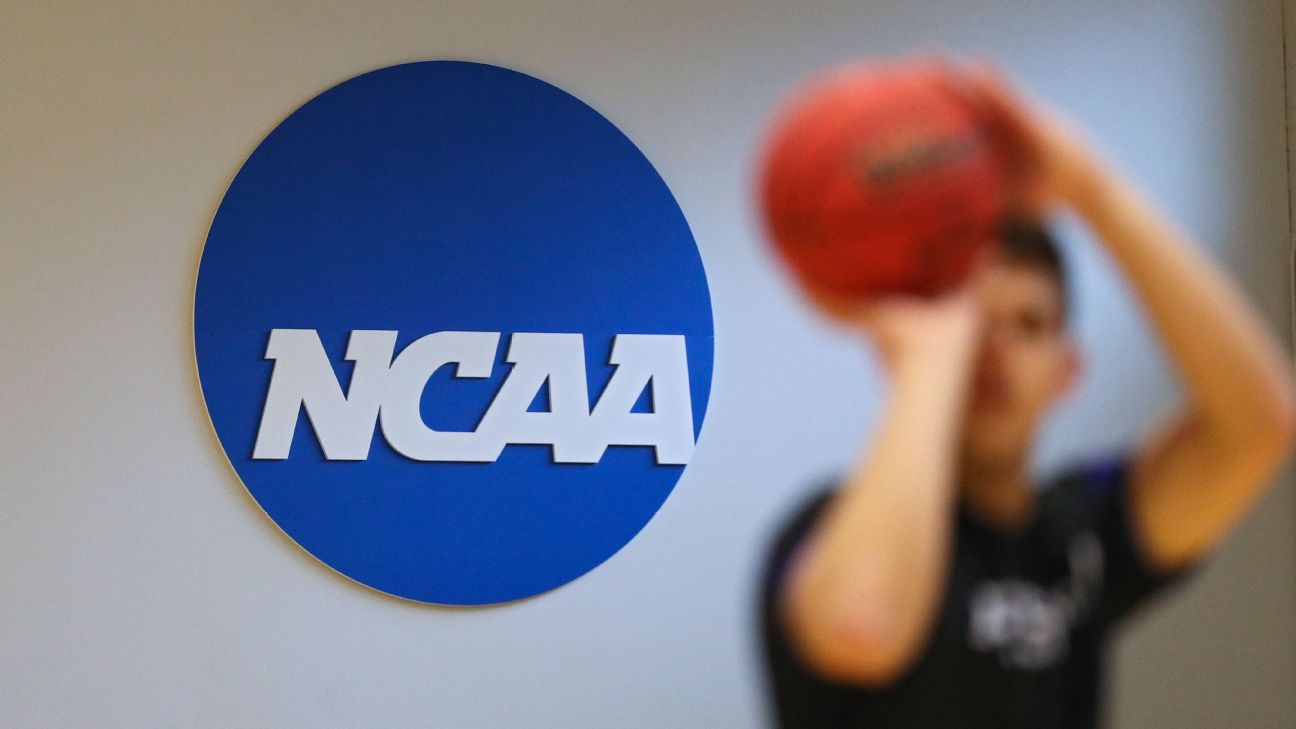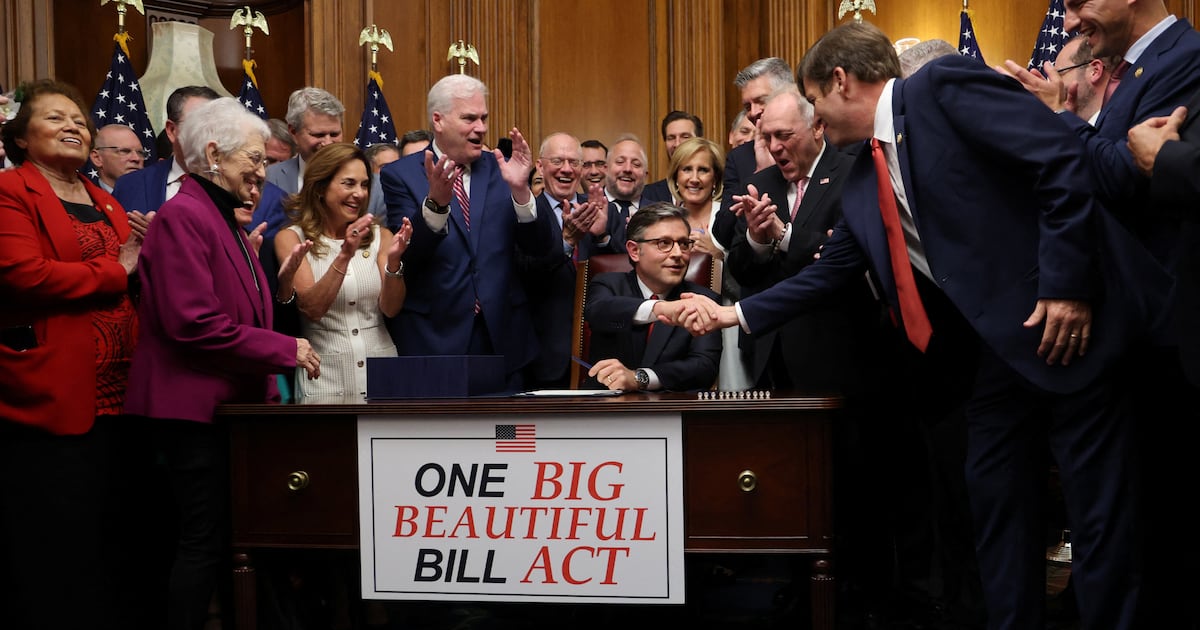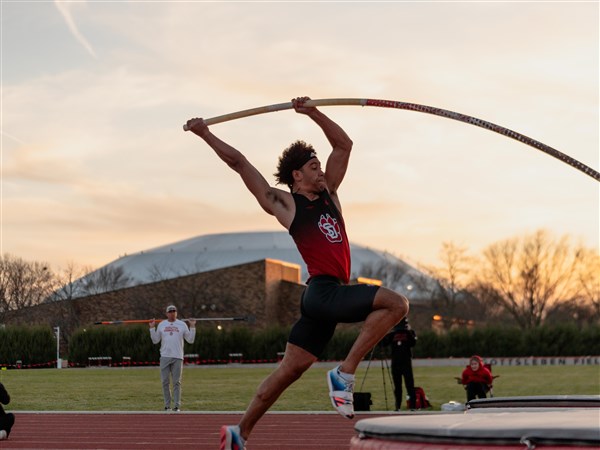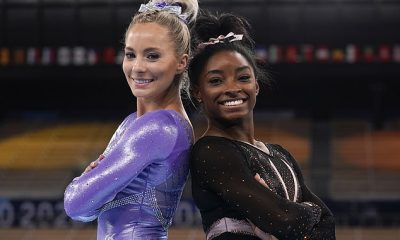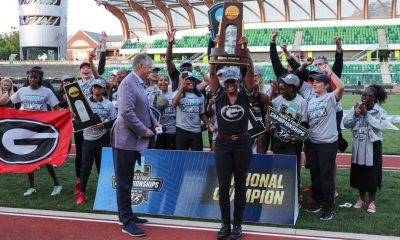Before Nick Keller was ahead of the pack, he was attempting to keep stride with his dad’s track and field athletes. Ephrata’s Easter practice was his favorite. Not due to the involvement — though, many viewed him like a younger sibling — but because of the peanut-butter-egg reward that awaited.
Nick describes his track journey as encouraged. Not forced. Not pulled. Not yanked.
It made sense he’d find his way to the gravel-shaded surface. Between the white lines. With his foot ready to rocket out of the starting block.
John Keller was the longtime coach of the Mountaineers program. Nick’s older brother, Noah, ran track at Ephrata. But much like the peanut-butter-egg surprise from his youth, the rewards and accolades that followed Nick throughout his high school career kept him craving more.
“At a very young age, he didn’t ever want to lose,” John Keller said. “He wanted to be first in everything. And then once he got into high school, as the years progressed, to me, it’s just been surreal from where he started to where he is now. … I just sit there and shake my head sometimes thinking, ‘This is unbelievable.’ ”
It was an itch Nick continued to scratch. A desire that was eternal. A rollercoaster ride that came with loops, twists, turns and thrills.
The Duquesne track pledge is one of five boys finalists for the 2024-25 LNP | LancasterOnline Athlete of the Year award. Nick holds 11 Mountaineers track records. He was also a staple for the football team, helping usher Ephrata to program history.
“I had my goals set, and I really hit every single goal for myself,” Nick Keller said. “So to look back and think about it, I just can’t thank everyone enough who helped me. I can’t thank God enough. It’s honestly hard to believe it’s all over.”
READ: After a second sprint sweep, is Ephrata’s senior the greatest in L-L League track and field history?
A conversation of his own
A cornerstone of Nick Keller’s success has been his support system.
John Keller, after resigning his post at Ephrata, remained integral in his son’s training by overseeing one-on-one workouts in the summer and winter. Noah, as a senior, showed Nick the ropes in the latter’s freshman season. Ephrata’s sprints coach, Austin Wealand, would entertain elementary-school-aged Nick during practices.
But Nick, too, has become the pillar, the local celebrity of his community. From testing the track and field waters in the long jump, Nick blossomed into a short-distance savant.
“We have some neighbors that have some grandkids, and they were always big around the sport,” said Dina Keller, Nick’s mom. “And they’d come to his meets. And they would all run around the house yelling, ‘I’m going to run like Nick.’ He just had such an outpouring (of support).”
Nick could always identify John’s motivation at a given meet, crediting his dad as the loudest voice. Wealand’s commands boomed from the infield and along the fence. Each endorsement nudged Nick to go the extra step, the extra mile.
“He taught me the ways,” Keller said of his father. “Honestly, made me feel like I could make things my own. Just because I learned so much from him, and he’s always pushed me so hard, and I’m very thankful for him being in my life. I don’t think he’s ever missed a meet.”
The product unfurled in Keller’s sophomore year. That’s when he took the Lancaster-Lebanon League by storm, striking his first of two short-distance triple crowns — the 100, 200 and 400 meters — at the league championships. No other L-L runner has achieved the feat.
Times also dropped. Keller ranks in the top three in the 100, 200 and 400 in L-L history.
His 100 rests at 10.47 seconds, placing him third and first in the FAT category. He stands atop the 200 at 21.31, having hit the mark in April at the Shippensburg Invitational. Bronze honors mesh with the 400 at 47.49.
Again, he’s in a conversation of his own, sitting in the top three of all three races.
“I think for him, it was being able to not prove to everyone else, but almost just to prove it to himself that he could go out there and run the times that he wanted, run with the competition that he wanted to run against,” Wealand said. “I know that the 22-second barrier in the 200 meter was a big barrier for him. I know the number 48 (in the 400) was a really big number for him. And once he broke through that threshold, he kind of just put the hammer down and didn’t look back.”
Keller repeated the league trifecta this spring. He ascended the District Three Class 3A 400 podium for the second time. He snared fourth in the 400 and eighth in the 200 at the PIAA meet.
“If you look across his career,” Ephrata head coach Matt White said, “every time he laid down a record in the 100 or the 200 or the 400, or indoors in the 60, the 200, the 400, we were like, ‘OK, he can’t top this.’ But by golly, he did again and again.”
‘He always had his eyes forward’
Keller’s sophomore season placed him on the main stage. Upped his stock. Sent the headlines swirling through the college coaching ranks.
Junior year was the time to shine. The pivotal piece to his recruiting process. The act that could’ve catapulted him into another stratosphere.
“He stayed miraculously positive throughout the whole thing,” John Keller said.
Nick Keller suffered a hamstring injury early in the season. He was sidelined through the dual-meet schedule. The body of his story, following a famed introduction, was put on hold.
“It was very devastating,” Keller said. “I was very upset. Obviously, I thought about the worst right when it happened, which is probably not the best thing to do. I felt like I was letting the team down, even though it wasn’t really my fault. But my trainers and my coaches just took me under their wing and just had one goal in mind, and that was to get me healthy for the postseason.”
Keller and his coaches described it as a miracle. Perhaps, a sprinkle of fairy dust from the training staff. He wasn’t full systems go once the postseason picture came into focus, but he had enough gas in the tank to bleed the well dry.
The Mountaineers ace opted out of the 100 and 200 and focused on the 400. A few notches beneath 100% was still plenty, as Keller sped to L-L gold, District Three silver and PIAA ninth place.
“It was my coaches, my teammates, my family, my trainers,” Keller said. “Everyone was just so positive to me, and they were so reassuring that everything was gonna be all right. Obviously, the junior year is the most important year for recruiting, but it all worked out.
“To still have those moments, I was very thankful. God obviously did it. I didn’t do as well as I expected, but just being there and having the opportunity was honestly a huge accomplishment.”
Once shackled to defeatism, Keller sculpted a stronger headspace amid the setback. Dodged and ducked each hook. Used the reversal as gospel.
“It has definitely changed my perspective on things, and I learned to not take things for granted,” Keller said. “I thought my body was invincible. I thought I was invincible. And obviously, I was not. … But it showed me everything happens for a reason. I’m very thankful for the lessons I’ve learned from that little bump.”
Those closest to Keller were also educated. Family, teammates and coaches marveled at his unwavering spirit.
“As bad as that was, I never saw Nick become really down or depressed or give up,” Dina Keller said. “He did what he needed to do. He did everything he was supposed to do. I think he always had his eyes forward.”
‘Hitting harder’
Fourth-and-1. Fifty-six yards from the end zone. Leading by two touchdowns in a 2023 District Three Class 5A quarterfinal against Garden Spot.
The play reserves space in Kris Miller’s mind. The Ephrata coach will forever attach the moment to Nick Keller’s gridiron career. It encapsulated everything Keller was about: hard working, physical, unafraid.
He hauled in the fourth-down prayer from then-starting quarterback Sam McCracken and bumped the advantage to three scores. The Mountaineers posted a 31-10 victory that November night. Ephrata, navigating its second District Three tournament appearance, later advanced to its first final in program history, following a 47-7 semifinal romping of Hershey.
“He went up and made a heck of a catch,” Miller said. “When I think of everything he was, it’s just speed. He’s so fast. And I don’t know if I’ll ever coach a kid again as fast as Nick is.”
Keller’s time in a helmet and pads can be overshadowed by his illustrious track resume.
Across three varsity seasons, Keller amassed 1,302 receiving yards on 62 receptions while tallying 15 touchdowns. Career highs of 30 catches, 707 yards and eight scores came in the celebrated 2023 campaign. He doubled as a defensive back, earning All-State second-team honors as a senior behind 36 tackles and three interceptions.
“The way that we changed Ephrata’s identity, I’ll always remember that,” Keller said.
The correlation between football and track was unending. Teammates like Jeremiah Knowles and Angel Collazo-Colon were part of Ephrata’s receiving corps. Come spring, the pair teamed with Keller in the 1,600-meter relay.
Knowles and Collazo-Colon had two years on Keller. The duo taught him. Nick pushed them.
“Football, it was about just enjoying it and having fun with your friends,” Keller said. “It’s really grinding all summer, but I’m gonna miss that this year.
“Track will always be a part of my life. But knowing that football is over, I think that’s hitting harder.”
‘Forever a team-first guy’
Keller had already done his job. He ran the 100, 200 and 400. The proverbial brakes had been shed from the framework.
Ephrata was on the brink of upsetting McCaskey in a Section One dual meet. A few more points, and the victory — 45 years in the making — belonged to the Mountaineers. The 1,600 relay was all that remained.
“He looked at his teammates, told his teammates, he’s going to put his body on the line and push the envelope,” said White, recalling the monumental win. “Because he wanted to make sure his teammates knew we had the potential to beat McCaskey. … He was always, forever was a team-first guy.”
That’s who Nick Keller was and is. He didn’t take risks to the point of potential harm. But if there was an ounce, even a drip of energy left, he was going to exercise it.
Keller displayed that when running solo. More so when a group effort was involved.
“He set the culture here,” White said. “He set the tone to raise that bar for others around him, to reach out and succeed. We were very, very blessed having him as a student-athlete here. Hopefully his legacy will be that he was not only just a good athlete, but he was also good teacher, too.”
Humbly, Keller agrees with the values. The records are nice. The recognition is welcomed. But it all means little when compared to team impact.
“I’d like to say I left a pretty good legacy,” he said, “but that really wasn’t my goal going into it. Just breaking all the records, it kind of was just handed to me. I’d say I left a positive note for Ephrata track. But it wasn’t just me. It was my teammates.”
Nick Keller now sets the pace, whether on the track or in the classroom — he was Ephrata’s male nominee for the A. Landis Brackbill award, for which a student-athlete must have at least a 3.5 GPA and compete in two varsity sports.
But in many ways, he’s still attempting to keep stride.
He’s traded chasing down peanut-butter eggs for the next triumph, the next record in his crosshairs.

